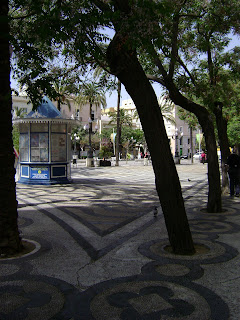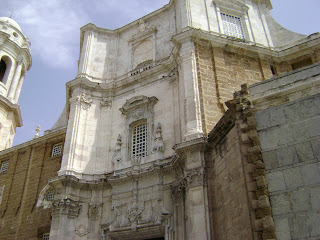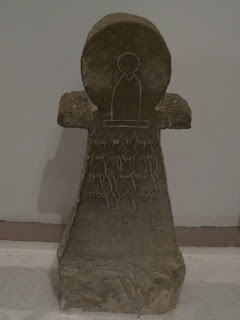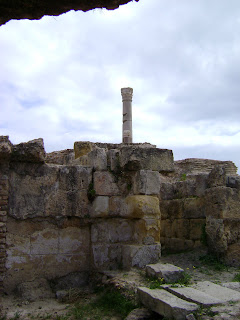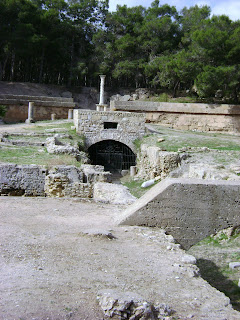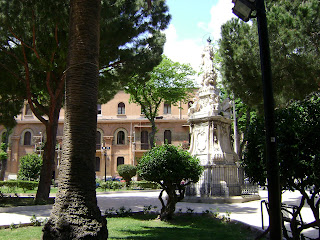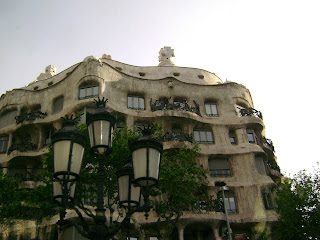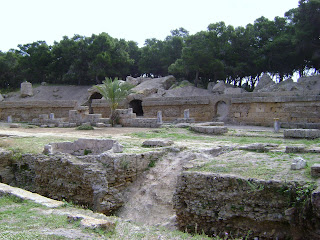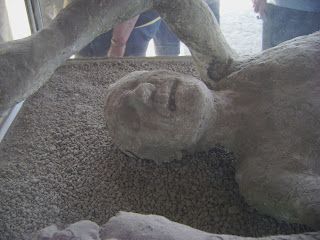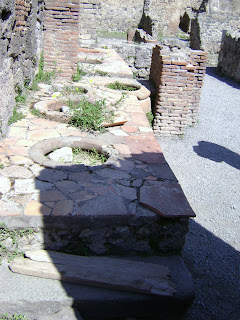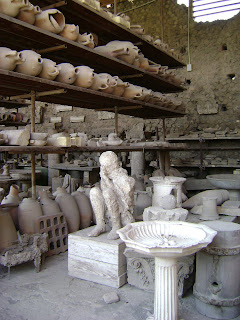




This is a topic of eternal fascination for me, and I have written about it elsewhere on many occasions, but it was in Tarquinia that I actually experienced a small measure of Inanna's descent to the Underworld.
The 'Underworld' or 'Great Below' of ancient Sumer as well as ancient Canaan was an actual place, found within the heart of a mountain.
Known as the Kur, Kurgal or Ekur, it translates as 'House Mountain', 'Great Mountain' or 'House which is like a Mountain'. The descent would have been made by means of actual stairs or a path carved into the mountain. The Mountain may have been one created by Nature, or like Silbury Hill, it could have been fashioned by human beings.
Mounds or Tumuli are houses of the dead but they are mountains as well. Rising above the ground, they lead to the 'Underworld' or land of the dead. An ancient Canaanite poem eloquently describes the ritual journey undertaken to the heart of the Mound. In fact, it was a practice in Canaan to hold funeral feasts inside the tomb or special area that served as the 'seat of power' for the dead.
The Sumerian poem of the Descent of Inanna is composed in a ritualistic rhythm that takes the reciter or reader gradually down the steps to the heart of the Underworld.
'From the 'great above', she set her mind towards the 'great below'.
The goddess, from the 'great above', she set her mind towards the 'great below'.
Inanna, from the 'great above', she set her mind towards the 'great below'.
My lady abandoned heaven, abandoned earth.
To the nether world she descended.
Inanna abandoned heaven, abandoned earth,
To the nether world she descended.
Abandoned lordship, abandoned ladyship,
To the nether world she descended.
In Erech she abandoned Eanna,
To the nether world she descended.
In Badtibira she abandoned Emushkalamma,
To the nether world she descended.
In Zabalam she abandoned Giguna,
to the nether world she descened.
In Adab she abandoned Esharra,
To the nether world she descended.
In Kish she abandoned Hursagkalamma,
To the nether world she descended.
In Agade she abandoned Eulmash,
To the nether world she descended.
Now she prepares herself by clothing herself with all the symbols of her power and authority:
'The seven divine decrees she fastened at her side,
She sought out the divine decrees, placed them at her hand.
All the decrees she set at her waiting foot,
The Shugarra, the crown of the plain, she placed on her head.
Radiance she placed upon her countenance.
The rod of lapis lazuli she gripped in her hand,
Small lapis stones she tied about her neck.
Sparkling gems she fastened to her breast,
A gold ring she gripped in her hand.
A breastplate she bound about her breast.
All the garments of her lordship she arranged,
And anointed her face with oils.
Inanna walked towards the nether world,
Her messenger Ninshubur walked at her side.
The pure Inanna says to Ninshubur:
'O thou, my constant support,
My messenger of favourable words,
My carrier of supporting words,
I now am descending to the nether world.
'When I shall have come to the Underworld,
Fill heaven with pleas for me.
In the assembly shrine cry out for me,
In the house of the gods, rush about for me,
Lower thy eye for me, lower thy mouth for me,
Like a pauper in a single garment, dress in mourning for me,
To the Ekur, the house of Enlil, direct thy step alone.
Upon entering the Ekur, the house of Enlil,
Weep before Enlil.
'Oh father Enlil, let not thy daughter be put to death in the underworld.
Let not thy good metal be ground up into the dust of the underworld.
Let not thy good lapis lazuli be broken up into the stone of the underworld.
Let not thy boxwood be chopped up into the wood of the woodcutter,
let not the maid Inanna be put to death in the Underworld.'
A series of instructions on how Ninshubur should proceed from temple to temple, exhorting all the gods follows.
When Inanna reaches the portal:
'Neti the chief gatekeeper of the Underworld asks:
'Who pray art thou?'
'I am the queen of heaven, the place where the sun rises.'
'If thou art the queen of heaven, the place where the sun rises,
Why pray hast thou come to the land of no return?
On the road whose traveler retuns not, how has thy heart led thee?'
Once permission to enter is granted, Inanna is forced to strip one of her symbols of power at each gate until at last she arrives at the throne of her sister, the Queen of the Underworld, naked and powerless.
At each gate, as the object of power is taken from her, she is told:
'In extraordinary fashion, O Inanna, have the decrees of the nether world been perfected.
O Inanna, do not question the rites of the Underworld!'
At last at the throne, judgement is pronounced.
The pure Ereshkigal seated herself upon her throne.
The Anunnaki, the seven judges, pronounced judgement before her.
They fastened upon her the eyes of death.
At their word, the word which tortures the spirit,
The ailing woman was turned into a corpse,
The corpse was hung from a stake.
After three days and three nights had passed,
Her messenger Ninshubur,
Her messenger of favourable words,
Her carrier of supporting words,
Fills the heaven with pleas for her.
Ultimately, in the house of death, the rite of rebirth is performed:
Upon the corpse hung from a stake,
Direct the fear of the rays of fire.
Sixty times the food of life, sixty times the water of life,
Sprinkle upon it:
Truly Inanna will arise.
Upon the corpse hung from a stake they directed the fear of the rays of fire.
Sixty times the food of life, sixty times the water of life,
They sprinkled upon it:
Inanna arose.
Inanna ascends from the Underworld:
The Anunnaki fled,
When Inanna ascends from the Underworld,
Truly the dead hasten before her...
They who preceded her,
They who precede Inanna,
Those who know not food,
Who know not water,
Who eat not sprinkled flour,
Who drink not libated wine,
Who take away the wife from the loins of the man,
Who take away the child from the breast of the nursing mother.'
Having undergone her shamanic ordeal in the land of the dead, Inanna returns, armed with the power of the Underworld. The Underworld demands a substitute. Like the tale of Proserpine and other myths and legends that deal with a seasonal death and rebirth, she who returns from the dead must send some one in her stead.
It is Dumuzi the Shepherd King who is dragged kicking and screaming into the Underworld to serve the sentence, but Death is nothing more than a rite of passage even for him and he will be allowed to return in the season of rebirth.
In Tarquinia, murals on the walls depict banquets as well as scenes of hunting and fishing. The characteristic door divided into four quarters is something quite different, however, an actual portal that leads to the Otherworld. Did the living join the dead in funeral banquets periodically as once they did in Sumer and Canaan? Did a high priest or priestess visit the tombs for incubation rites or inspiration in shamanic rites? Did the living hold vigils on the tumuli as the Celts and Norse later?
Burial mounds are as ancient as life itself and always have been believed to hold special powers. The dead may turn to dust but most cultures have held beliefs in the immortality of the soul and the ability of the living to cross the border into Death as well as the ability of the Dead to return to the land of the living, if only in dreams or visions.
Photographs include a view of Silbury Hill, the site of paleolithic caves near Haifa in Palestine, Etruscan tumuli in Cervetari and a very imposing tumulus in Turkey linked in legend to King Midas. Alas, I have not been to Cerveteri myself, but I should love to see more Etruscan sites!




